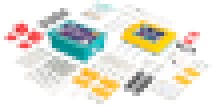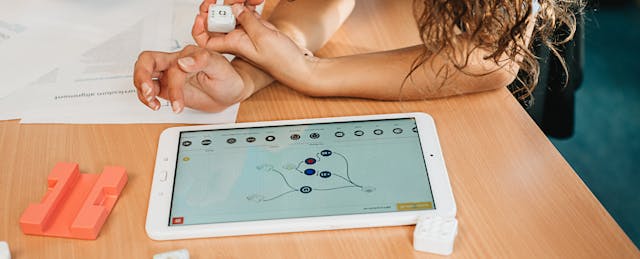In front of Joachim Horn lay several white blocks small enough to fit in the palm of his hand. He attached an equally small wheel to one of the blocks, and with some taps on a tablet computer, the block became a working motor and the wheel whirred to life.
It was a simple demonstration of products sold through his company, SAM Labs, which sells kits to teach hands-on lessons around designing, building and tweaking programs. Horn believes simplicity is a key to making science and technology interesting to not only students, but their teachers. “There is a misconception that you need to be very technical to teach STEAM,” says the 28-year-old CEO of SAM Labs. “We want to deliver tools to empower any teacher.”
That simplicity has also won over investors, too. The London-based startup has raised $8.9 million in a Series A2 round from Partners in Equity and Inventures Investment Partners. To date, the company has raised $19.8 million.
Founded in 2014, London-based SAM Labs has grown quite a bit since its first financing—a Kickstarter campaign that brought in about 126,000 pounds (about USD $200,000 at the time). In 2016, the company participated in the second cohort of startups in Intel’s Education Accelerator program.
Today, the company boasts 41 full-time employees and has sold its builder kits to 4,000 schools worldwide. About 3,000 of those schools are in the U.S., SAM’s largest market.

SAM charges $1,499 for a STEAM kit that includes curriculum, interface app and wireless blocks for up to 30 students to work on projects. The website also sells individual parts that start at $17 for a charging dock. Horn says the company could be profitable, but has chosen to invest to support its continued growth.
Horn believes his kits will help prepare students for an ever-advancing workforce by getting them interested in technology at a young age and prompting them to ask questions about how technology works. “Every single teacher cares about reducing the skills gap,” he says. “We ask ourselves how we can equip students to be fully empowered for the reality that surrounds them.”
He wants to use the new funding to provide more training and resources to help teachers explore the full use of his kits, which allow students to design, write, build and debug programs wirelessly. Students and teachers have built kaleidoscopes, xylophones and motorized bridges.
A 2016 paper from University of Oslo researchers found that portable maker kits like SAM, littleBits and Printrbot help bring the benefits of maker spaces to those without technological expertise because of the kits’ simplicity and portability. “Our key finding was that a hands on popup maker-space environment engaged participants in collaborative exchanges around an easy to use technological platform led to creative outcomes even though all the participants were completely new to electronic tinkering,” the authors wrote.
SAM Labs’ Horn says the company has grown in the U.S. thanks to a focus on attending regional professional development events to interact with teachers. Another way the company has grown is through its ability to work with other tools a classroom might use, like Legos and Micro:bit.
That compatibility helped sell SAM to Mike Nye, online program coordinator for the Redmond School District in central Oregon. He saw a demonstration of a kit almost two years ago. The kit’s drag and drop interface impressed him while the wireless connection meant easier management and cleanup for teachers, he says.
His district is now in its second year of using the kits, and Nye is working toward offering the kits to more students throughout grades three to eight. He estimates the school district has spent about $50,000 for hardware and curriculum for 3,000 students in grades three to eight. The students who have tried the kits have responded positively, he says.
“Something about it is inviting enough to get them to keep trying,” he says. “From what I’ve seen, it’s been a huge win for us.”


